1000 chilies, 6 women and me: A Sichuan Cooking Class in Beijing
Cooking is no more only Mom and Grandmas task. Today, it’s totally en vogue and has never been as easy as today. Thanks to tons of websites where users share their passion, you will never ever have to ask your grandmother for a recipe again.
Also, you do not spend hours running from one supermarket to another for ingredients. No, today you can even buy rationed packages including detailed cooking instructions.
And there is also that next big thing: cooking classes for everyone. Even for people, who previously could not even make a pancake. Just like me. So where did I go for cooking classes? To China.
On my trip to China last April, I joined a cooking class by a Beijing institution called The Hutong.
In addition to activities such as cycling or tea workshops, they offer a variety of courses about regional dishes from different provinces of the country. From homemade tofu to Shanxi noodles, from Cantonese to Sichuan style. They even have courses on Chinese art of baking. I chose Sichuan cuisine, which is just the right class for me and my gusto for spicy food.

First of all, it was not so easy to find the venue. It is a small house that is hidden in the maze of hutongs – these are the narrow streets, where until the 1990s, the majority of the population of Beijing lived and that were demolished to make way for modern high-rise complexes. Today the small, single-storey cottages of these districts are called hutongs (falsely, because the streets are the hutongs). And our venue, the Culture Exchange Center ‘The Hutong’, is in housed in one of them.
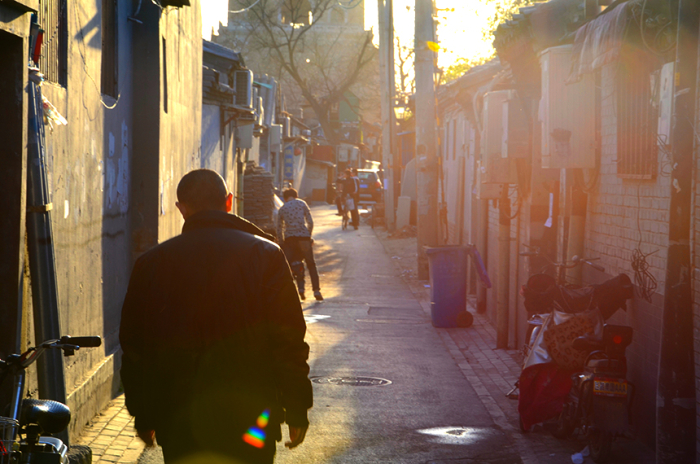 v
v
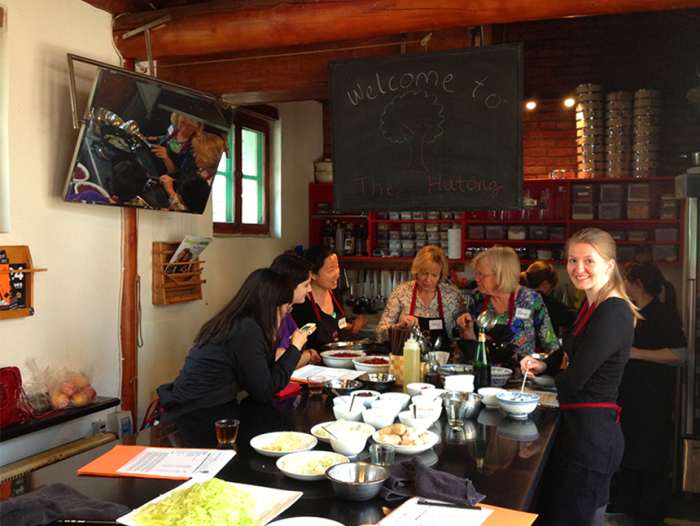
Once there all participants first met. It was a small group of five women and our cooking teacher, a young Chinese woman with surprisingly good command of English.
The kitchen was really nice: it was tidy, bright and clean. Also todays menu was pretty impressive: Sichuan La Zi Ji with fragrant fried fish flavored eggplant and Sichuan flavored lettuce stem salad. The freshly printed recipe that we were allowed to take home with us, lay nicely prepared in a beautifully designed envelope next to a massive cutting board at each workplace.
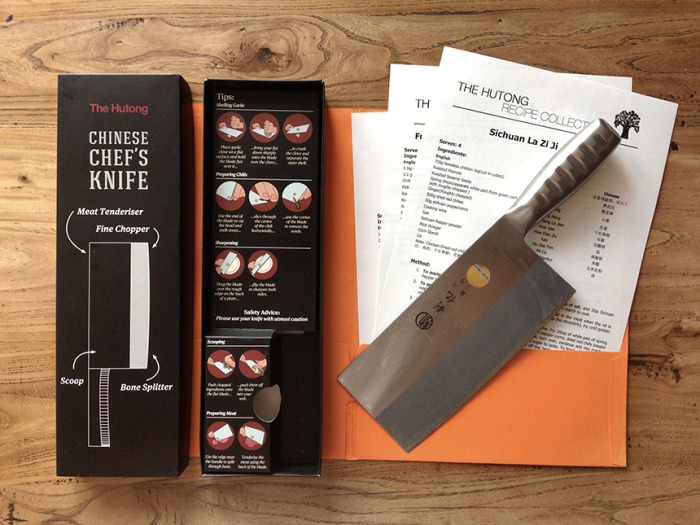
Since we were here to learn something, of course, everyone had its own kitchen workplace. And a huge long knife, or rather a cleaver with which we immediately began to chop vegetables. To my surprise, the cook praised me for my cutting skills. By a Chinese!! Maybe that’s why I bought one of these kitchen cleavers after the cooking class.
While chopping we were taught lots of tips how you deal properly with the knife. One trick is, for example, not to stretch the fingers of the hand that holds the vegetables, but to bend them a little bit. Thus, the knife cannot catch the fingertips.

We also got to know the ingredients and thus the supposed main one: chili peppers. Hundreds of them! Of course, no participant would have believed that the chilies that filled a huge bowl would actually all be put in the pan. Of course, the Sichuan cuisine is spicy, but who would have thought that it is so spicy? When asked on the subject, the cooking instructor gave us only a wise smile. So much for that.
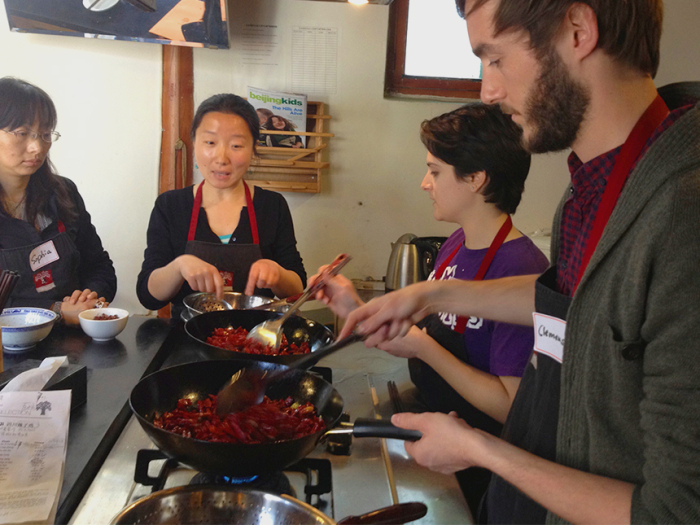
Of course, we didn’t use pans, but woks. One by one we played the chef role while the others passed the ingredients. Here we learned the next tricks: for example, one controls the temperature of the oil by holding a chopstick vertically into the wok. The oil is hot enough to add the first ingredients, when there are bubbles around it. And when you want to be really smart, don’t use plastic chopsticks!
What I’m also going to remember for the future: how to deal with eggplants. To get rid of the water in it you first put it in small pieces into cold water. There they first suck the water like a sponge and after that they can easily be squeezed out.
Also for searing there is a little trick: The oil is hot enough to put the eggplant pieces into it, when there is no smoke, but light steam. Only in this moment it has just the right temperature and the eggplant sucks the oil to become nice and crispy.
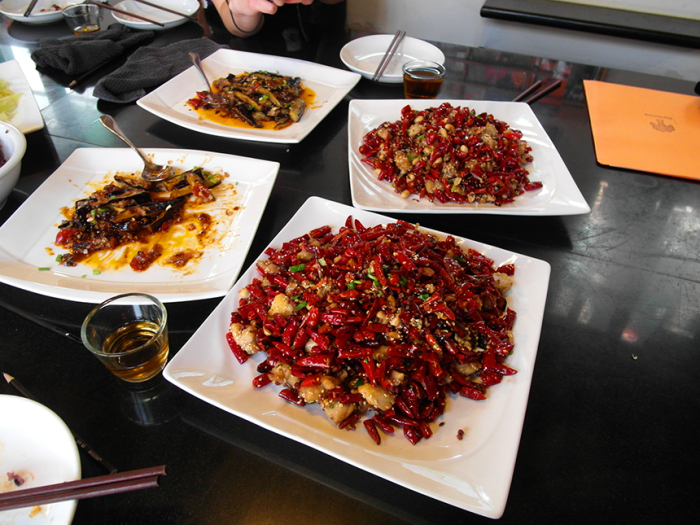
Against all expectations, the food was ready after less than 10 minutes. And to our surprise, it was not too spicy – in fact, it was just right and tasted delicious. What we didn’t know: The chili peppers that are dried, seeded and added during cooking, serve rather for decoration and aroma, but not for eating.

As a conclusion, the Sichuan cooking class was a really nice experience. Not only did we have a pleasant atmosphere, I also learnt a lot. Now I know that there are countless vinegar varieties, I know how to use Sichuan pepper and how you deal with a kitchen cleaver and six women in the kitchen.
Nevertheless, back home in Germany, I cut myself into the finger.
I already have plans for joining the dumplings cooking class on my next trip to Beijing. Until then, I still prefer to trust my grandmothers’ recipes. Who knows, maybe sometime soon I will be the to teach her one.
HARD FACTS
Venue: The Hutong, 1 Jiu Dao Wan Zhong Xiang Hutong, Beijing, China 北京东城区九道湾中巷1号
How to get there: The easiest way is from EXIT C of BEI XIN QIAO Subway Line 5 (北新桥地铁 东南角 出口 C 石雀胡同). That is right near a place called “Grandma’s Kitchen” in Shique Hutong. Follow the signs on the walls.
Cost: about 30 Euros
Duration: 2,5 – 3h





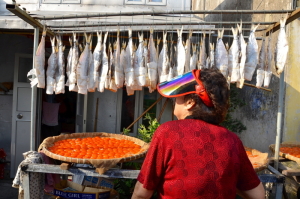


Alter Falter, das klingt echt scharf – das würde ich gerne mal kosten! 🙂
It looks great! Can’t wait to make it to Beijing this fall. The plan is to relocate there and stay for a year or so, very exciting stuff!
What a great idea! Would love to so the same actually. Because you can do great trips from from Beijing as a base: the Wall, Hong Kong, Lhasa…
Backlinks